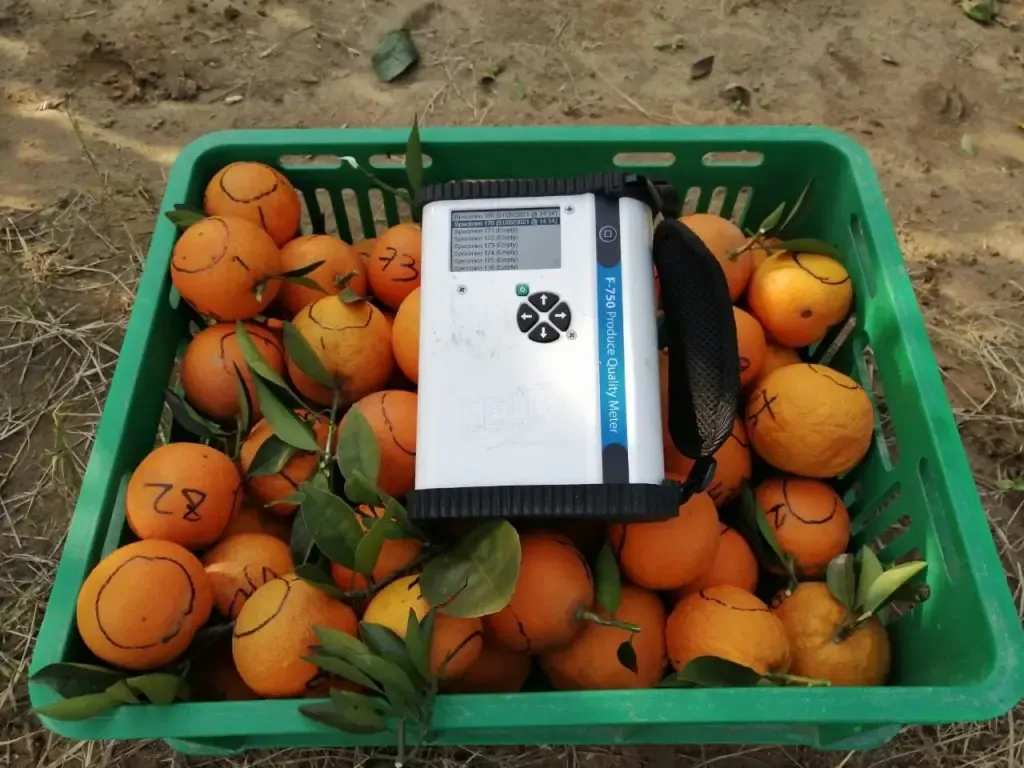In the realm of agricultural technology, a groundbreaking study has emerged that promises to revolutionize the way we assess the quality of orah mandarins. Published in the journal *智慧农业* (translated as “Smart Agriculture”), the research, led by Aiguo Ouyang from East China Jiaotong University and his team, delves into the intricate world of light propagation within the multi-layered tissues of orah mandarins. This study not only sheds light on the optical properties of different tissue layers but also provides a robust framework for optimizing spectral detection systems, potentially transforming the agricultural and food quality assessment industries.
The team’s innovative approach combines visible light/near-infrared (Vis/NIR) spectroscopy with Monte Carlo simulation methods to unravel the complex interactions of light within orah mandarin tissues. “By understanding how light penetrates and interacts with different layers of the fruit, we can develop more accurate and reliable non-destructive detection methods,” explains Ouyang. This is a significant leap forward, as the current methods often struggle with weak signals and difficulties in extracting pulp information due to the fruit’s thick, multi-layered skin.
The research involved measuring the optical parameters of the oil sac layer, albedo layer, and pulp tissue of orah mandarins using a single integrating sphere system combined with the Inverse Adding-Doubling method. The team then established a three-layer concentric sphere model to simulate the transmission patterns of photons within the fruit. The findings revealed that the oil sac layer, rich in carotenoids, exhibited a peak absorption coefficient at 500 nm, while the porous structure of the albedo layer led to a higher reduced scattering coefficient. The pulp tissue, being translucent, showed the lowest reduced scattering coefficient.
One of the most compelling aspects of the study is the analysis of light penetration depth. The researchers found that in the 500~620 nm band, light penetrated deeper into the oil sac layer than the albedo layer. However, at 980 nm, water molecule absorption in the pulp tissue caused a significant reduction in light penetration depth. This detailed understanding of light propagation patterns is crucial for optimizing the configuration of detection devices.
The Monte Carlo simulation results indicated that light was primarily absorbed within the orah mandarin tissue, with transmitted photons accounting for less than 4.2%. As the source-detector distance increased, the average optical path and light attenuation in the fruit tissue showed an upward trend. Interestingly, the contribution rates of the oil sac layer, albedo layer, and pulp tissue to the detected signal showed decreasing, decreasing, and increasing trends, respectively. This led the researchers to recommend a source-detector distance of 13~15 mm for quality detection devices, striking a balance between signal contribution from the pulp tissue and sufficient diffuse reflectance signal strength.
The implications of this research are far-reaching. By providing a theoretical basis and technical support for optimizing spectral detection systems, this study paves the way for more accurate and reliable non-destructive quality assessment methods. “Our findings offer important references for developing more precise detection methods and equipment for orah mandarins and potentially other fruits with similar structures,” adds Ouyang.
The commercial impacts of this research are substantial. In the agricultural sector, the ability to accurately assess fruit quality non-destructively can lead to significant cost savings and improved efficiency. For the energy sector, the insights gained from this study could inspire new approaches to optimizing light-based technologies, such as solar panels and photodetectors, by understanding how different materials interact with light.
As the world continues to embrace smart agriculture and advanced food quality assessment technologies, this research serves as a beacon of innovation. The work of Ouyang and his team, published in *智慧农业*, not only advances our understanding of light propagation in orah mandarins but also sets a new standard for agricultural technology research. The future of non-destructive quality assessment looks brighter than ever, thanks to this groundbreaking study.

